Sleep Dallas Blog
How To Get A Straight Smile With Invisalign
July 17, 2015
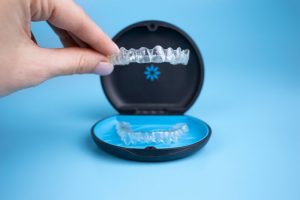
Traditional braces can be a pain. Prickly wires and a constant feeling of metal on your teeth can quickly become bothersome. That’s where Invisalign technology comes in nicely. As one of the more popular orthodontic treatments, it’s the preferred way to straighten teeth by both adults and teens. The best part about it is people won’t even know you’re straightening your teeth! We offer this and other fantastic dentistry services that aim to keep your smile beautiful. For clear braces, Irving residents know who to turn to: 21st Century Dental Med Spa & Sleep Center in Irving, TX. Our team will ensure you’re well educated on Invisalign technology that is becoming more popular by the day.
(more…)Winning the Snore War
December 4, 2014
By TOBI SCHWARTZ-CASSELL In Part I of our two-part series, we dealt with the dangers of untreated sleep apnea. In Part II, we’ll describe the treatments now available.
Your Significant Other snores and you think you have it bad? Guess again. It’s even worse for the snorer. But a non-surgical approach is now available so you’ll both enjoy pleasant dreamzzzzz…..
The lack of a good night’s sleep can create more problems than meet the eye. According to those in the know, sleep apnea, and the more severe version—obstructive sleep apnea (OSA)—can also cause headaches, fatigue, mood swings, depression, weight gain and surprisingly, ADHD. Two studies even show there is a connection between sleep apnea and cancer (see “The Truth About Sleep Apnea: It’s More Than Just Extreme Snoring” on page 13 of the July/August 2012 issue of Girlfriendz).
Though the National Sleep Foundation reports that more than 18 million American adults suffer from sleep apnea, the American Sleep Apnea Association (ASAA) says it is only one of 84 different sleep disorders (SDs) including: circadian rhythm SDs (determined by the body’s internal clock), insomnia (the most prevalent of all SDs), narcolepsy, restless legs syndrome and night terrors.
The original diagnostic tool, according to Kent Smith, DDS, of 21st Century Dental, is the polysomnogram, which is “an attended study at a sleep center. But it’s expensive because the tech overseeing the study has to be paid, and the patient has to be provided with a place to sleep. Some insurance companies are actually moving to ambulatory studies (home studies) and some are even saying they will only pay for a full polysomnogram if the patient is incapable of undergoing an ambulatory study.”
Once diagnosed, a number of treatments are available, ranging from the severity of surgery to the first line of defense—weight loss. Stephen J. Markus, DMD, of the Centre for Dentistry of Haddon says, “For some people, losing weight is going to tone down the snoring. The thinner the neck and the less fat in the body, the easier breathing’s going to be. Also, those who are obese often experience very shallow breathing because the stomach has gotten so large it’s pushing the diaphragm up so they can’t take deep enough breaths.”
“Sleep position training can help,” adds Dr. Smith, “as do nasal decongestants, the use of over-the-counter remedies like Breathe Right® Strips and tilting the head of the bed.”
“The surgical approach, uvulopalatopharyngoplasty or UPPP, entails the use of a laser to cut back the tissue in the soft palate and remove the uvula. This allows more space for the tongue, so it does not obstruct the airway,” says Dr. Markus. “But UPPP can be very painful, kind of like a pizza burn, for at least two weeks. I also understand that in a lot of cases the tissue grows back.” ASAA reports the success rate of UPPP is 50%.
With those odds, many doctors recommend CPAP (continuous positive airway pressure) machines that use mild air pressure to keep patients’ airways open. The National Heart Lung and Blood Institute, a part of the National Institutes of Health, explains on its website that CPAP machines have three main parts:
- A mask or other device that fits over your nose or your nose and mouth with straps to keep everything in place
- A tube that connects the mask to the machine’s motor
- A motor that blows air into the tube
“Most people think CPAP for moderate to advanced sleep apnea is the only solution, but it’s not,” affirms Dr. Markus. “It is, however, the best solution. The mask is very difficult for people to sleep with, which is why most of the referrals I get for nighttime sleep appliances are from doctors whose patients are non-compliant.”
Drs. Markus and Smith agree that oral appliances are a safe, non-invasive way of dealing with sleep apnea. “The appliances we work with are designed to create more space at the back of the throat so the tongue and soft palate don’t touch one another,” says Dr. Markus. “The one we’ve had the best results with are the SomnoMed® appliances. You may have seen ads for appliances selling for $19.99, but there are problems with those because they aren’t made by a professional and they’re not monitored. They are made from soft, pliable material so they can act orthodontically and therefore move teeth and create TMJ problems. So there’s a lot of frustration in the marketplace by people who want to find a way to sleep and not disturb the other person in the room and not jeopardize their own lives. These appliances can be a good solution to those with very mild sleep apnea, but for anyone more advanced than that, consultations with a sleep MD and a dentist well-versed in oral sleep appliances would be indicated.”
Dr. Markus continues, “To get the process started, we need a prescription from their sleep doctor, or the results of a sleep study showing they are mild to moderate, because the last thing we want to do is jeopardize someone’s health because they haven’t tried CPAP.”
Equally important to diagnostic studies and treatment is follow-up, says Dr. Smith. “Follow-up sleep studies to assess the effectiveness of the appliance are the standard of care. An MD would not prescribe a drug for hypertension and then never take the patient’s blood pressure again. He would want to make sure the drug was serving the purpose, and was properly calibrated for the patient’s condition. This is no different with oral appliances used to treat snoring and sleep apnea.”
Dr. Smith stresses the importance of follow-up because, “There is a condition called ‘silent apnea’ characterized by someone who may stop snoring. But assuming the condition has been treated effectively simply because the snoring has ceased is a dangerous proposition.” The frequency of follow-up sleep studies depends on several things, says Dr. Smith, including “Severity of the disorder, availability of monitors and the curiosity of the patient or dentist. If the stars are aligned properly, and the first ambulatory study says the patient’s sleep apnea is abated, the patient is then sent for a full polysomnogram as a final assessment, which also proves success. However, often several intermediate studies are needed before the appliance has reached maximum clinical effectiveness.”
_________________________________________
Stephen J. Markus, DMD Center for Dentistry, Haddon Heights, NJ
Kent Smith, DDS 21st Century Dental, Irving, Texas www.sleepdallas.com
Is Insomnia Linked to Sleep Apnea?
October 17, 2014
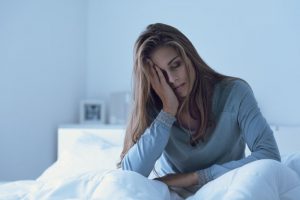
One of the most common sleep disorders is insomnia and according to a recent report published in the Journal Sleep, it may be linked to sleep apnea. Researchers in Albuquerque interviewed 20 men and women with chronic insomnia, all of whom denied having any sleep breathing disorders. The researchers found that chronic insomniacs woke on average 30 times a night. Hypoxia or a brief drop in the volume of oxygen inhaled caused by a narrowed airway closely followed 90 percent of those interruptions.
In the study, sleep researchers asked participants about their causes of their nightly awakenings. Surprisingly, none of the participants mentioned breathing as a reason for their awakening. Of the most popular responses were racing minds, nightmares, a need for the bathroom and pain.
However, after analyzing their sleep, it became clear that their awakenings were triggered by a respiratory event. Each participant underwent a polysomnography test while spending a night at a sleep clinic. Using wired sensors that tracked brain waves and breathing, researchers and lab technicians were able to chart and monitor every awakening, when brain waves shifted to a waking state for at least 16 seconds, and every breathing issue causing oxygen intake to dip well below normal.
Read more here: https://www.soundsleepinstitute.com/insomnia/is-insomnia-linked-to-sleep-apnea/
How Your Bedroom Is Making You Depressed
February 13, 2014
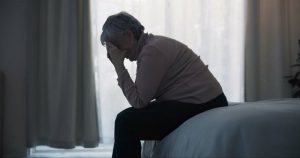
In the study, researchers separated hamsters into two groups: one group experienced a standard light/dark cycle, while the other group was exposed to a dim light at night—on par with city lights outside your window or the glow of a TV screen. After four weeks, hamsters who slept with some light showed signs of depression. (Depressed hamsters? Yup. Researchers tell by observing the rodents’ interest in sugar water.)
(more…)7 Strange Facts About Insomnia
January 13, 2014
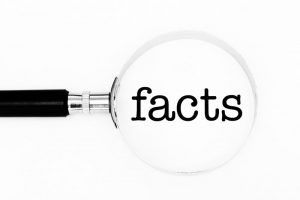
1. Insomnia can be hereditary
Sleep problems could run in families. In a 2007 study published in the journal Sleep, researchers found that out of 953 adults who said they were good sleepers, had insomnia symptoms or suffered from insomnia, about 35 percent of those with insomnia had a family history of insomnia. According to a 2008 study, teens with parents who have insomnia have an increased risk for using prescribed sleeping pills, and having mental problems.
(more…)OK, should I take melatonin or not?
December 10, 2013
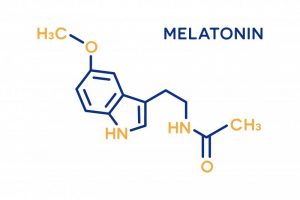
I would like to say that I have a definitive answer for that question, but as it turns out, the answer is: “It depends”. There is a plethora of research out there on the effects of melatonin, and most studies show it to have benefits even beyond helping you sleep. However, I will keep my comments related to sleep, as this is the reason most of you are taking (or have taken) melatonin.
(more…)NAPS – Friend or Foe?
October 7, 2013
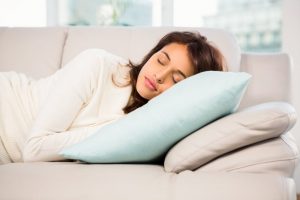
Napping has been debated since the first nap was created. No more debating. Napping is a good thing. No, wait…napping is a bad thing. Yep, both sides are correct.
Let’s look at the drawbacks first.
(more…)Correspond with sleep physicians
September 12, 2013
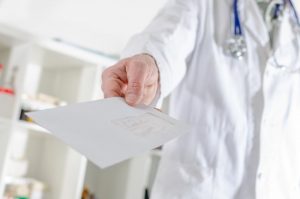
Q: I know that quite a few board certified sleep physicians send you patients who are CPAP non-compliant or don’t qualify for CPAP. How did you gain their trust? I can’t find any in my area who will send me these patients!
Dr. Smith: I send letters after seeing every sleep patient to the MD who diagnosed the sleep apnea, detailing everything I checked, my findings, treatment attempts, etc.. . If there is one common complaint I heard from the sleep physicians at Sleep 2009 in Seattle, it’s the fact dentists do not follow up with the sleep physician after they receive the patient. That is so sad, after the grief we give them for not involving dentists. If you are a dentist reading this, PLEASE keep the sleep physician in the loop!
How Does Exercise Affect Your Sleep?
August 29, 2013
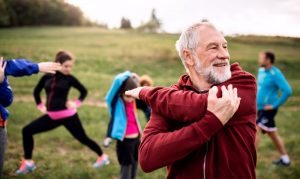
Working out especially cardio improves the length and quality of your sleep. Yes, getting sweaty during the day can help your slumber that evening….just be sure to take a bath or shower before crawling under the covers!
(more…)Pilots And Sleep Apnea
July 18, 2013
Question:
I know somebody who is a pilot. They can not be diagnosed with sleep or it is immediate disability and they can’t pilot the plane. MY question is have you ever done the MAD for this type of person without the diagnosis? What would the liability be if you said it was just for snoring?
Dr. Smith:
This is one reason we have ambulatory (home) monitors, so we can rule out anything more severe. I would insist on at least this, and you can keep it away from insurance and any official diagnosis. The liability would be pretty heavy if he fell asleep at the controls, thinking he was cured, when in fact you had created a “silent apneic”, so you really need to get at least a Level 4 study done on this patient.
